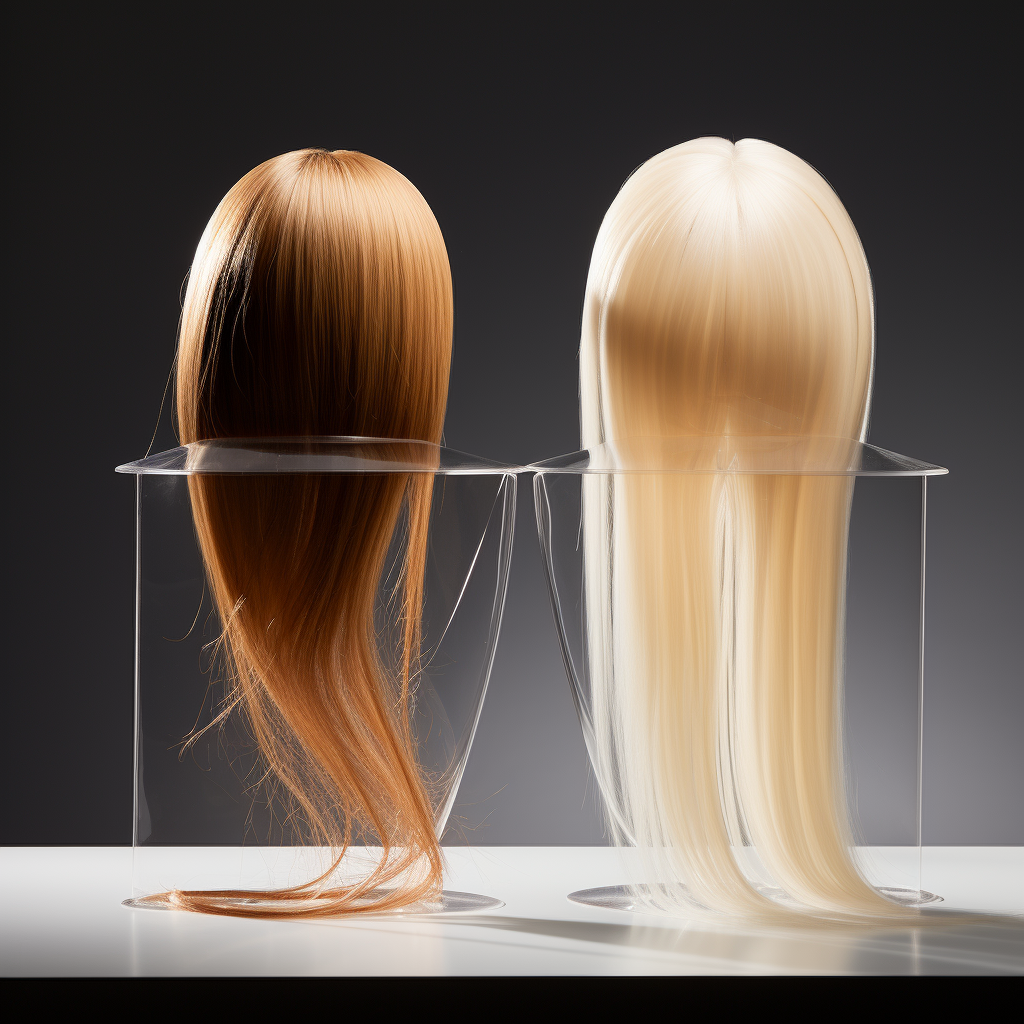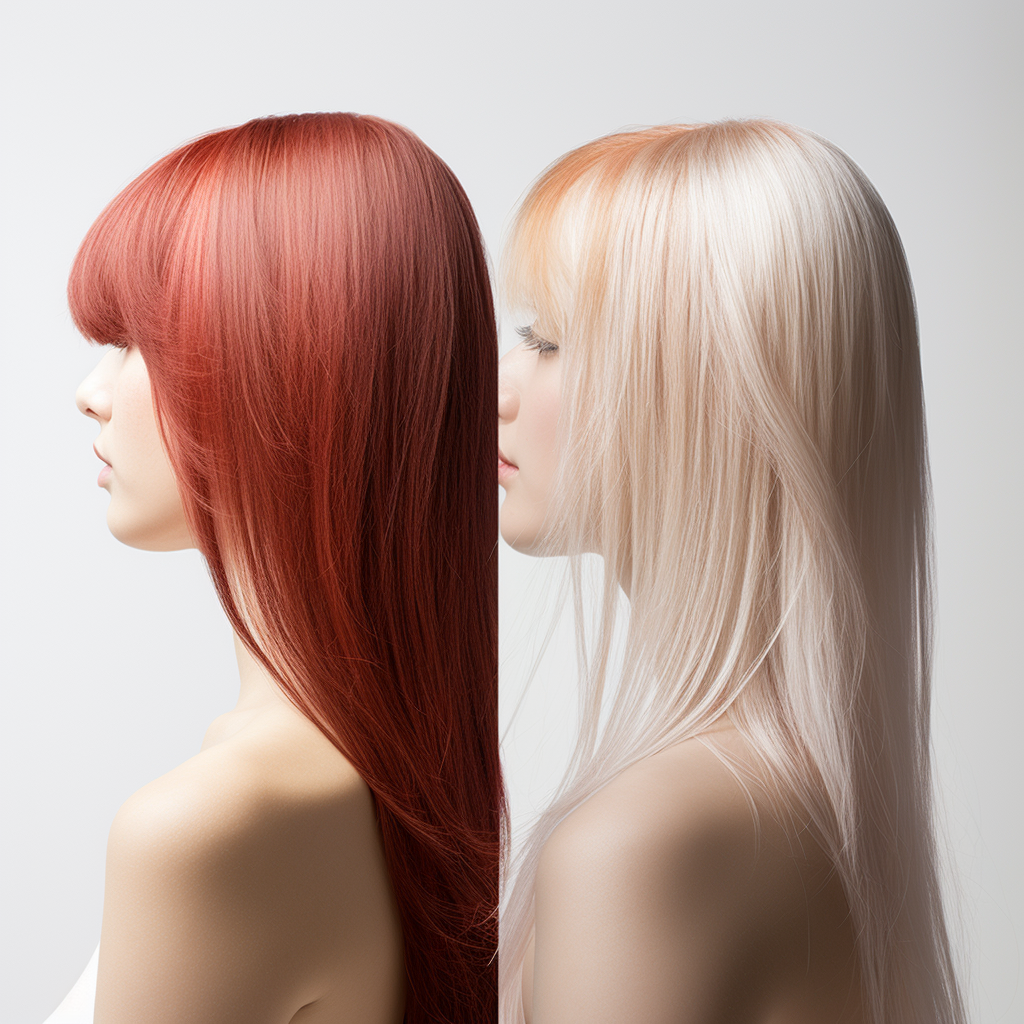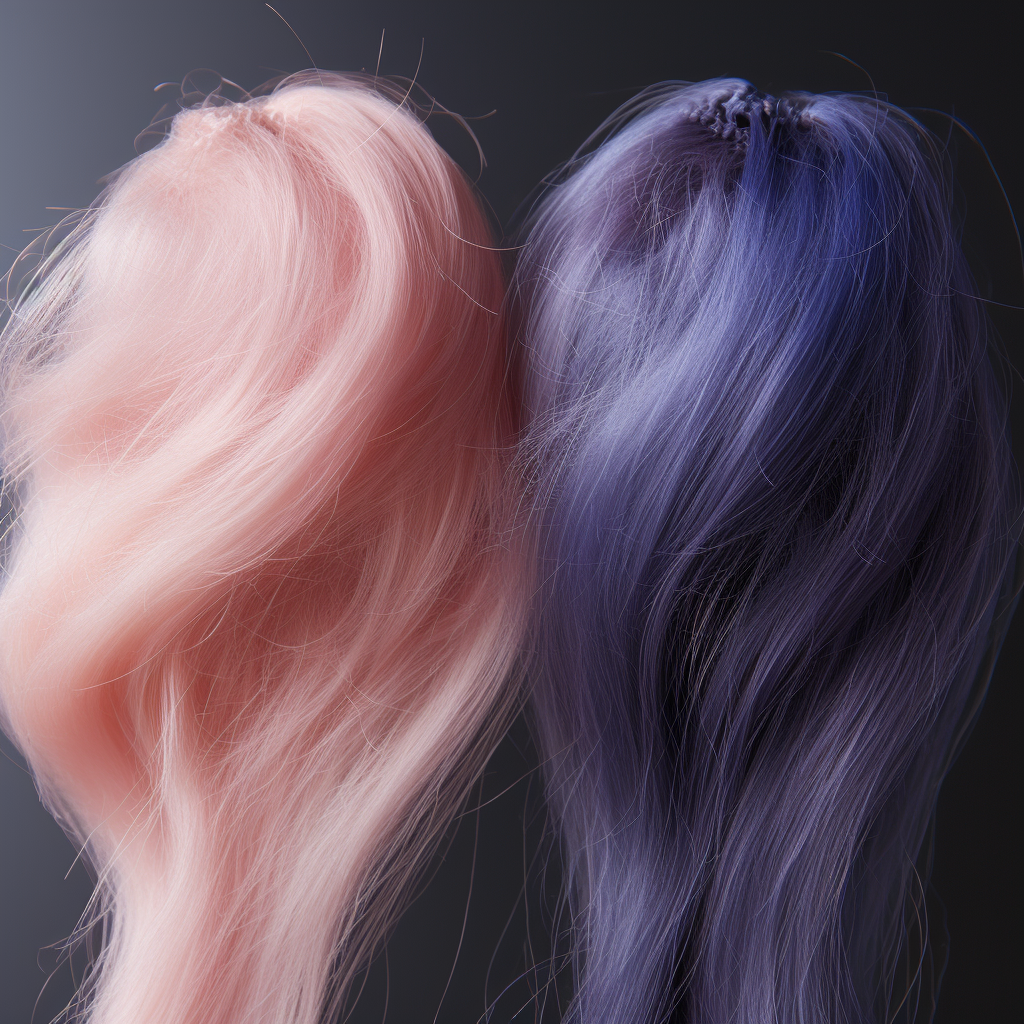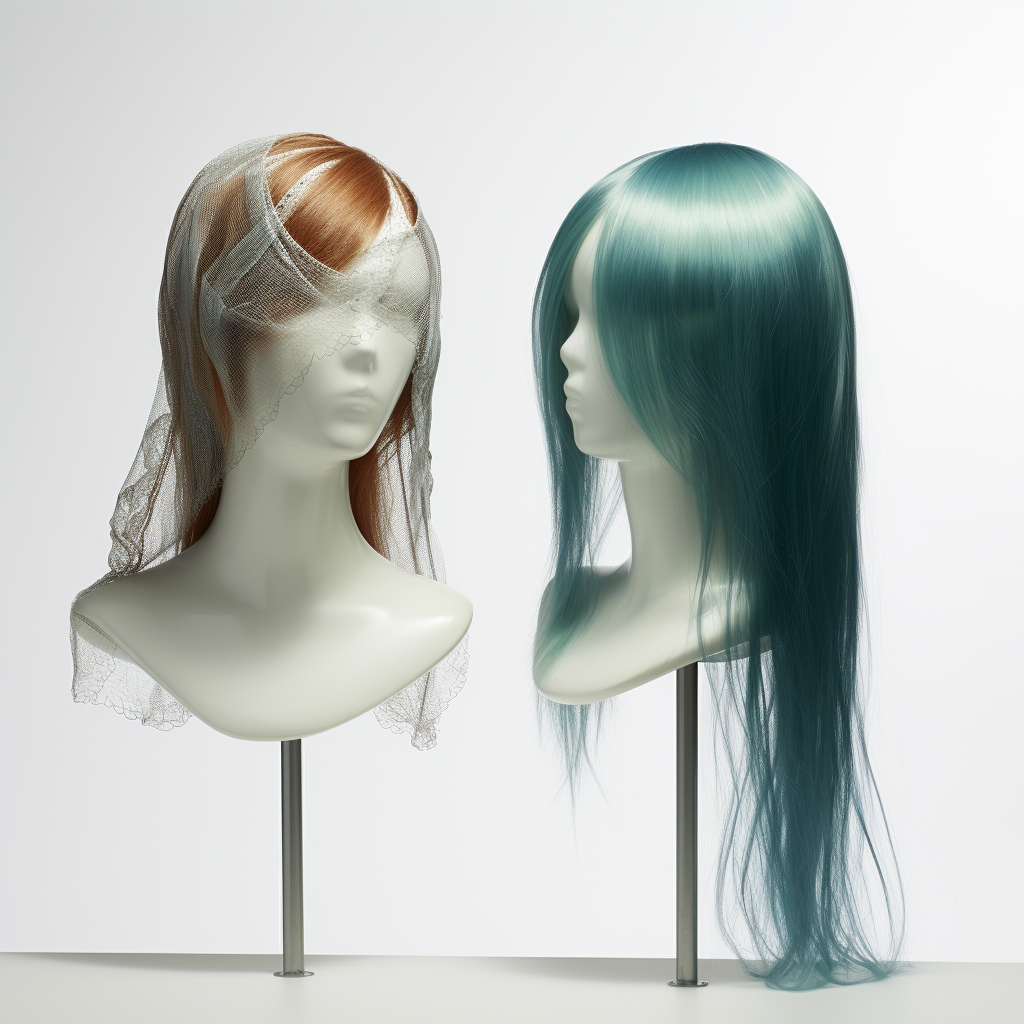Contents
Hair loss, fashion, or simply a desire for a new look – there are many reasons why individuals opt for wigs. Wigs have been part of human culture for centuries, used as protective styles, to denote rank or status, or as a response to medical conditions. In the modern era, wigs have been considered both a necessity and a luxury. There are two main categories: synthetic and natural (or human hair) wigs.
Choosing between synthetic and natural hair wigs can be a conundrum. Each type comes with its own set of benefits and drawbacks, which can make the decision-making process overwhelming. To make an informed choice, it’s essential to understand the underlying characteristics of both and weigh their pros and cons.
This article delves deep into the world of wigs, exploring the fundamental differences between synthetic and natural hair options. With in-depth insights, comparisons, and expert opinions, we aim to guide you towards making the best choice for your needs and preferences. Whether you’re a first-time wig buyer or a seasoned wig-wearer looking to make a switch, this guide is tailored to offer a comprehensive perspective.
Table 1: Basic Comparison of Synthetic and Natural Hair Wigs
| Feature | Synthetic Hair Wigs | Natural Hair Wigs |
|---|---|---|
| Basic Composition | Man-made fibers | Human hair |
| Initial Cost | Generally lower | Typically higher |
| Maintenance Level | Low to moderate | Moderate to high |
| Lifespan | Shorter (a few months) | Longer (a year+) |
| Styling Versatility | Limited | Highly versatile |
| Look and Feel | Less natural | More natural |
In subsequent chapters, we’ll dive deeper into each aspect, offering detailed insights, expert opinions, and recommendations.

What Are Synthetic Hair Wigs?
2.1. Composition of Synthetic Hair
Synthetic hair wigs are made from man-made fibers, typically crafted from fine plastic filaments. These plastic types include acrylic, polyester, PVC, or other polymers. Through advanced manufacturing techniques, these fibers are designed to mimic the look and feel of natural human hair.
Over the years, technology has significantly improved the quality and feel of synthetic hair. Early versions were noticeably artificial, with an unnatural shine and texture. Today, however, top-quality synthetic wigs can be hard to distinguish from natural hair wigs at first glance.
2.2. Types of Synthetic Wigs
Synthetic wigs can be categorized based on their heat-resistance and texture:
- Standard Synthetic Hair: These are the most common type of synthetic wigs. They retain their style even after washing, making them relatively low-maintenance. However, they cannot be restyled with heat tools.
- Heat Friendly Synthetic Hair: This is a more recent innovation, allowing wearers to use heat tools like flat irons or curling rods. They offer greater styling flexibility compared to standard synthetic wigs but may not last as long due to the exposure to heat.
Table 2: Types of Synthetic Wigs and Their Features
| Type | Heat Resistant? | Retains Style After Wash? | Lifespan |
|---|---|---|---|
| Standard Synthetic Hair | No | Yes | 4-6 months |
| Heat Friendly Synthetic | Yes | No (requires restyling) | 2-4 months |
What Are Natural Hair Wigs?
3.1. Types of Natural Hair
Natural hair wigs, as the name suggests, are made from real human hair. The hair is sourced from donors, treated, sanitized, and then crafted into wigs. The origin and type of the hair play a pivotal role in determining the wig’s quality, texture, and price.
Some of the commonly used hair types in wig-making are:
- Remy Hair: This is considered the highest quality of human hair. The term “Remy” refers to the method of collection which ensures the hair cuticles are aligned in the same direction, resulting in less tangling and a more natural look.
- Virgin Hair: Hair that hasn’t been chemically processed or treated in any way is termed as “Virgin”. It’s the most natural form of hair and can be dyed, permed, or styled without much damage.
- Non-Remy Hair: This hair type has cuticles going in different directions. It’s more common and affordable but tangles more easily.
3.2. Origin of Natural Hair Wigs
The geographical origin of the hair also plays a role in its characteristics:
- Asian Hair: Typically thicker strands, more durable, and available in darker shades.
- European Hair: Finer strands, comes in a wide range of colors and textures.
- African Hair: Often has a curly or coily texture, robust and versatile.
Table 3: Types and Origins of Natural Hair and Their Features
| Hair Type | Features | Common Origin |
|---|---|---|
| Remy Hair | Cuticles aligned, less tangling, premium quality | Various |
| Virgin Hair | Unprocessed, versatile for styling and dying | Various |
| Non-Remy | More prone to tangling, more common | Various |
| Asian Hair | Thick strands, durable, dark shades | China, India |
| European Hair | Finer strands, varied colors and textures | Russia, Eastern Europe |
| African Hair | Curly/coily texture, robust and versatile | African countries |
Comparative Analysis: Pros and Cons
Distinguishing between synthetic and natural hair wigs involves more than just understanding their composition. To make an informed choice, a detailed comparison of their pros and cons is vital.
4.1. Synthetic Hair Wigs
Pros:
- Affordability: Often more pocket-friendly than natural hair wigs.
- Maintenance: Retains its style after washing, thus requiring less day-to-day styling.
- Diverse Styles: Available in a vast array of colors and styles.
- Ready-to-Wear: Comes pre-styled and can be worn straight out of the box.
Cons:
- Lifespan: Generally lasts only 4-6 months with regular wear.
- Styling Limitations: Standard synthetic wigs cannot be restyled with heat.
- Look and Feel: Might have an unnatural sheen, especially cheaper variants.
- Heat Sensitivity: Can be damaged if exposed to high temperatures.
4.2. Natural Hair Wigs
Pros:
- Natural Look & Feel: Mimics the natural movement and texture of real hair.
- Styling Versatility: Can be colored, cut, and styled using heat tools.
- Longevity: With proper care, can last over a year or even longer.
- Heat Resistant: Can tolerate exposure to high temperatures without damage.
Cons:
- Maintenance: Requires regular washing and styling similar to natural hair.
- Cost: Higher initial investment compared to synthetic wigs.
- Color Variation: Natural hair may have slight variations in color and texture.
- Potential for Damage: Can be damaged by over-styling, just like our own hair.
Table 4: Comparative Pros and Cons
| Feature | Synthetic Hair Wigs | Natural Hair Wigs |
|---|---|---|
| Affordability | Often cheaper | More expensive |
| Maintenance & Care | Lower | Similar to real hair |
| Lifespan | 4-6 months (standard) | 1 year+ |
| Styling Versatility | Limited (standard) | High |
| Look and Feel | Less natural (especially budget options) | Highly natural |
| Reaction to Heat | Sensitive (standard) | Resistant |

The Cost Factor: Investment vs. Longevity
One of the pivotal factors influencing wig choices is the cost. While many might consider the initial price as the determining factor, it’s essential to weigh this against the longevity and maintenance costs.
Synthetic Wigs: Generally cheaper upfront. However, with a lifespan of a few months (especially for standard synthetic wigs), one might end up purchasing multiple wigs in a year, thereby increasing the cumulative cost.
Natural Hair Wigs: Higher initial investment, but their longevity makes them cost-effective in the long run. Given their extended lifespan, the per-month cost of owning a natural hair wig can often be lower than a synthetic one.
Maintenance costs, however, can raise the total expense for natural hair wigs, given they may require special shampoos, conditioners, and styling products.
Table 5: Cost vs. Lifespan Analysis
| Wig Type | Initial Cost | Average Lifespan | Maintenance Costs |
|---|---|---|---|
| Synthetic Wigs | $ (varies based on quality) | 4-6 months (standard) | Minimal |
| Natural Hair Wigs | $$$ (varies based on origin & quality) | 1 year+ | Moderate to High (special care products) |
Maintenance & Care
Both synthetic and natural hair wigs require care to maintain their appearance and prolong their lifespan. Here’s how you should care for each type:
6.1. Synthetic Hair Wigs
- Washing: Use cool water and a mild shampoo. Avoid scrubbing, which can cause tangling. Gently swish the wig in the water and pat dry with a towel.
- Drying: Allow the wig to air dry on a wig stand. Using a blow dryer can damage the synthetic fibers.
- Detangling: Use a wide-tooth comb or a brush designed for synthetic wigs. Start from the tips and work your way up to the base.
- Styling: For standard synthetic wigs, avoid heat tools. If you have a heat-friendly wig, use tools on a low setting.
- Storage: Store on a wig stand away from direct sunlight, which can fade the color.
6.2. Natural Hair Wigs
- Washing: Use lukewarm water with a sulfate-free shampoo and conditioner. Gently massage the scalp area and run your fingers through the hair to detangle.
- Drying: Pat dry with a towel and air dry on a wig stand. You can use a blow dryer on a low setting, but air drying is gentler.
- Detangling: Use a wide-tooth comb or a brush starting from the tips and moving up.
- Styling: Style as you would your own hair. Use heat protectant sprays when using heat tools.
- Storage: Keep it on a wig stand in a cool, dry place. If storing long term, consider placing it in a silk or satin bag to prevent tangling.
Table 6: Maintenance & Care Guidelines
| Maintenance Task | Synthetic Hair Wigs | Natural Hair Wigs |
|---|---|---|
| Washing | Cool water, mild shampoo | Lukewarm water, sulfate-free products |
| Drying | Air dry | Air dry or low-heat blow dryer |
| Detangling | Wide-tooth comb; from tips to base | Same as synthetic |
| Styling | Avoid heat (standard); low setting for heat-friendly | Heat protectant, regular tools |
| Storage | Wig stand, away from sunlight | Wig stand in a cool, dry place |
Style & Versatility
The joy of wigs lies in the ability to transform one’s appearance instantly. Both wig types offer a plethora of styles, but their versatility varies.
7.1. Styling Synthetic Wigs
- Standard Synthetic: These come pre-styled and return to their original style after washing. While this limits personal customization, it ensures a consistent look.
- Heat-Friendly Synthetic: Offers more flexibility. You can use heat tools, but at lower temperatures. Over time, however, frequent restyling can decrease the wig’s lifespan.
7.2. Styling Natural Hair Wigs
- Adaptable: Since it’s real hair, you can treat it similarly to your own. This includes coloring, cutting, curling, or straightening.
- Texture Variety: Natural hair wigs come in various textures like straight, wavy, curly, and coiled, providing a range of styling options.
- Reactivity: Like real hair, natural hair wigs can react to environmental conditions. For instance, they might frizz in humidity or fall flat in dry conditions.
Table 7: Styling Versatility
| Feature | Synthetic Hair Wigs | Natural Hair Wigs |
|---|---|---|
| Personal Customization | Limited (Standard); Moderate (Heat-friendly) | High (can cut, color, and style) |
| Texture Options | Depends on initial style | Vast (straight, wavy, curly, coiled) |
| Environmental Reactivity | Remains consistent in different environments | Reacts similarly to natural hair (e.g., frizz in humidity) |
Final Verdict
Choosing between synthetic and natural hair wigs boils down to your individual needs, lifestyle, budget, and how frequently you plan to wear the wig. Here’s a concise breakdown to guide your decision:
8.1. Opt for Synthetic Hair Wigs if:
- Budget is a Primary Concern: These are typically more affordable than their natural counterparts.
- Low Maintenance is Preferred: Especially with standard synthetic wigs, the style remains intact with minimal care.
- Short-Term Use: If you’re looking for a wig for a particular event or to wear occasionally, synthetic might be the way to go.
- Experimentation: Given their relative affordability, you can purchase multiple styles and colors without breaking the bank.
8.2. Choose Natural Hair Wigs if:
- Natural Look and Feel is Essential: These wigs mimic the movement, texture, and appearance of real hair.
- Long-Term Investment: While pricier, they last longer, making them cost-effective over time.
- Versatility: If you like to frequently change your hairstyle, color, or length, natural hair wigs offer unparalleled flexibility.
- Frequent Use: For those wearing wigs daily, the comfort and adaptability of natural hair wigs are beneficial.
Table 8: Decision Guide
| Criteria | Synthetic Hair Wigs | Natural Hair Wigs |
|---|---|---|
| Budget | $$ (Varies) | $$$ (Varies) |
| Maintenance | Low to Moderate | Moderate to High |
| Usage Frequency | Occasional to Regular | Regular to Daily |
| Styling Versatility | Limited to Moderate | High |
Conclusion
Both synthetic and natural hair wigs offer unique advantages. Synthetic wigs are perfect for those who want a hassle-free, cost-effective solution, especially for short-term or occasional use. In contrast, natural hair wigs, with their authentic appearance and adaptability, are ideal for daily wearers and those who view their wig as a long-term investment.
By weighing the pros and cons, understanding your preferences, and assessing your needs, you can find the perfect wig that not only complements your style but also enhances your confidence.

FAQs
1. How often should I wash my wig?
- Synthetic Wigs: Once every 12-15 wears or when there’s noticeable build-up.
- Natural Hair Wigs: Once a week or after 10-15 wears, similar to natural hair.
2. Can I sleep with my wig on?
It’s advisable not to. Sleeping can cause friction leading to tangles and possible damage, especially for longer wigs.
3. Can I swim wearing my wig?
While possible, it’s not recommended. Chlorine and salt water can damage both synthetic and natural hair wigs. If you do, ensure you wash it immediately after.
4. Is it okay to use regular hair products on my wig?
For natural hair wigs, most regular products are fine, though sulfate-free options are best. For synthetic wigs, use products specifically designed for them.
5. How can I store my wig when not in use?
Storing your wig on a wig stand in a cool, dry place is best. This maintains the wig’s shape and keeps it free from tangles.



